The Next Frontier: AI Innovations Reshaping Employee Onboarding
Estimated Reading Time: 10 minutes
Key Takeaways
- AI-powered onboarding systems reduce training time by up to 70% while improving knowledge retention
- Personalized learning paths driven by AI algorithms increase employee engagement and satisfaction
- 24/7 AI assistants provide immediate support for new hires, reducing HR workload by up to 40%
- Predictive analytics can identify potential retention issues during onboarding before they become problems
- Inclusive onboarding design with AI helps accommodate diverse learning styles and accessibility needs
Table of Contents
- Accelerated Learning and Productivity
- AI: Automating the Tedium
- The Personalized Onboarding Journey
- The 24/7 AI Onboarding Buddy
- The Future of Onboarding: Predictive and Inclusive
- Implementation Strategy and Best Practices
- Measuring Success: Key Metrics and KPIs
- FAQs About AI-Powered Employee Onboarding
The employee onboarding process has long been recognized as a critical period that can make or break a new hire’s success within an organization. Yet traditional onboarding methods often fall short, with standardized approaches that fail to address individual learning needs and overwhelm HR departments with repetitive tasks. Artificial intelligence is now revolutionizing this crucial business function, bringing efficiency, personalization, and unprecedented support capabilities to the onboarding experience.
Accelerated Learning and Productivity
AI-powered onboarding platforms are dramatically reducing the time it takes for new employees to reach optimal productivity levels. By leveraging adaptive learning algorithms, these systems can identify knowledge gaps and adjust training content in real-time, focusing on areas where each individual needs the most support.
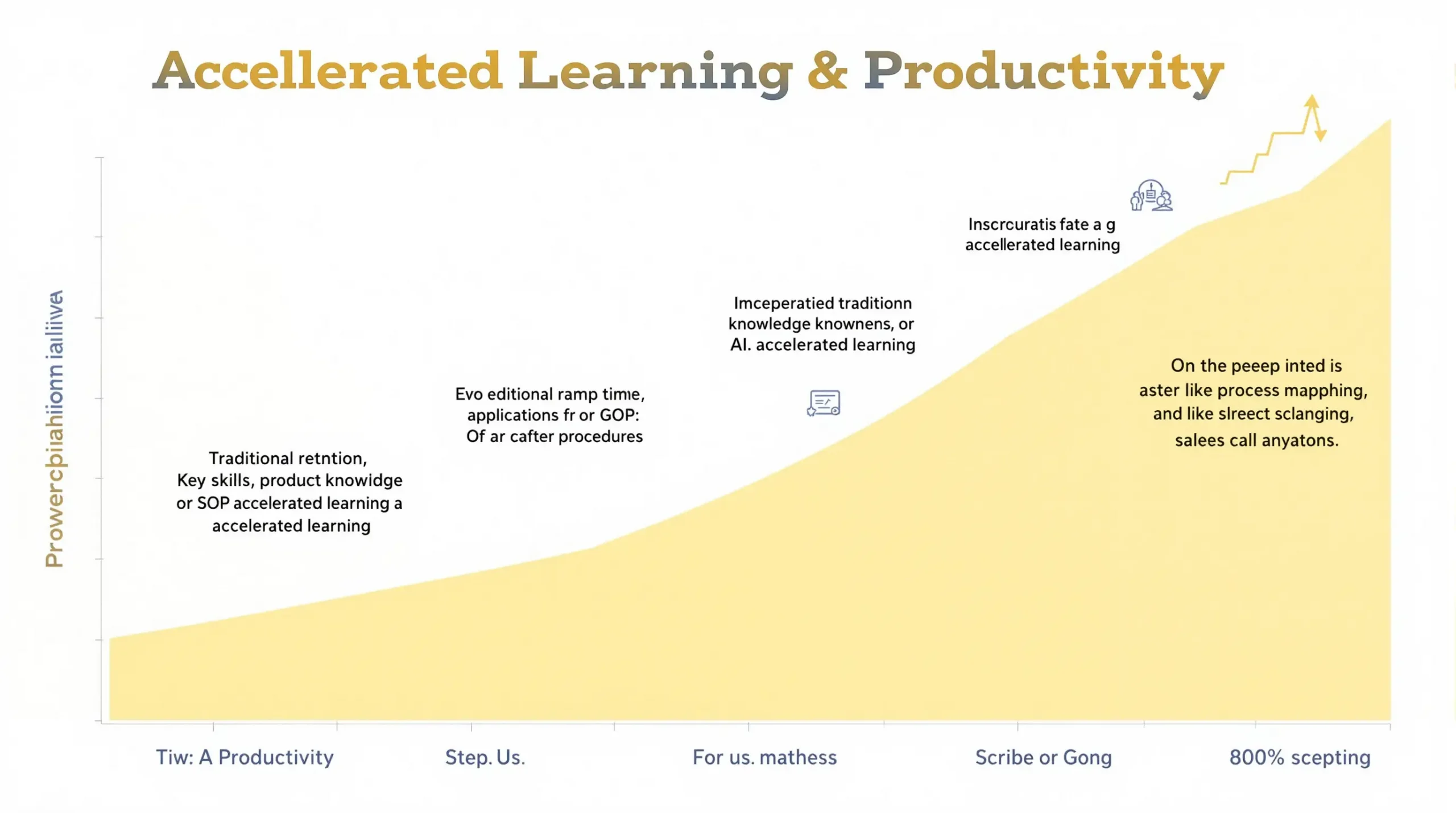
Research shows that companies implementing AI-driven onboarding systems experience up to a 70% reduction in training time, while simultaneously reporting improved knowledge retention rates. This accelerated learning curve translates directly to bottom-line benefits, with new hires contributing meaningful work outcomes weeks earlier than with traditional onboarding methods.
“We’ve seen our new sales representatives reach their first quota targets an average of 23 days faster after implementing our AI onboarding platform. The system’s ability to adapt to each individual’s learning pace has been a game-changer for our team’s productivity curve.”
— Sarah Chen, VP of Sales Operations at TechVantage Solutions
AI: Automating the Tedium
One of AI’s most valuable contributions to the onboarding process is the automation of repetitive administrative tasks that traditionally consume HR resources. From document processing to collecting and validating employee information, AI systems are streamlining these workflows with remarkable efficiency.
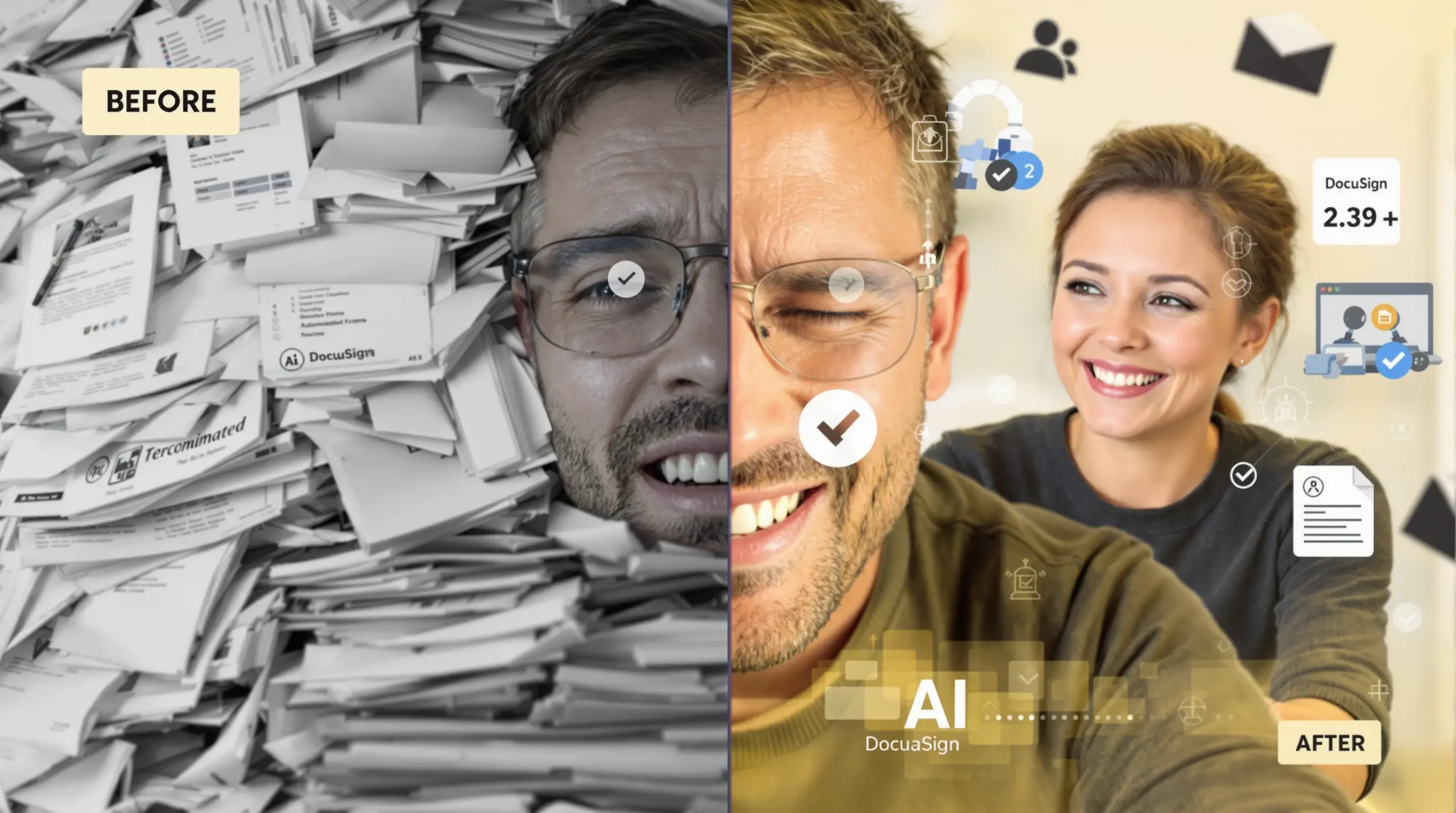
Advanced document processing systems can now extract information from forms with near-perfect accuracy, automatically populate HR databases, and flag discrepancies for human review. This not only reduces the potential for human error but allows HR professionals to redirect their attention to high-value activities like relationship building and strategic planning.
Companies implementing these AI automation solutions report reducing administrative onboarding tasks by up to 85%, with the average HR team saving approximately 15 hours per new hire.
The Personalized Onboarding Journey
Gone are the days of one-size-fits-all onboarding. AI algorithms now enable truly personalized learning experiences that adapt to each employee’s background, role, learning style, and performance during the onboarding process itself.
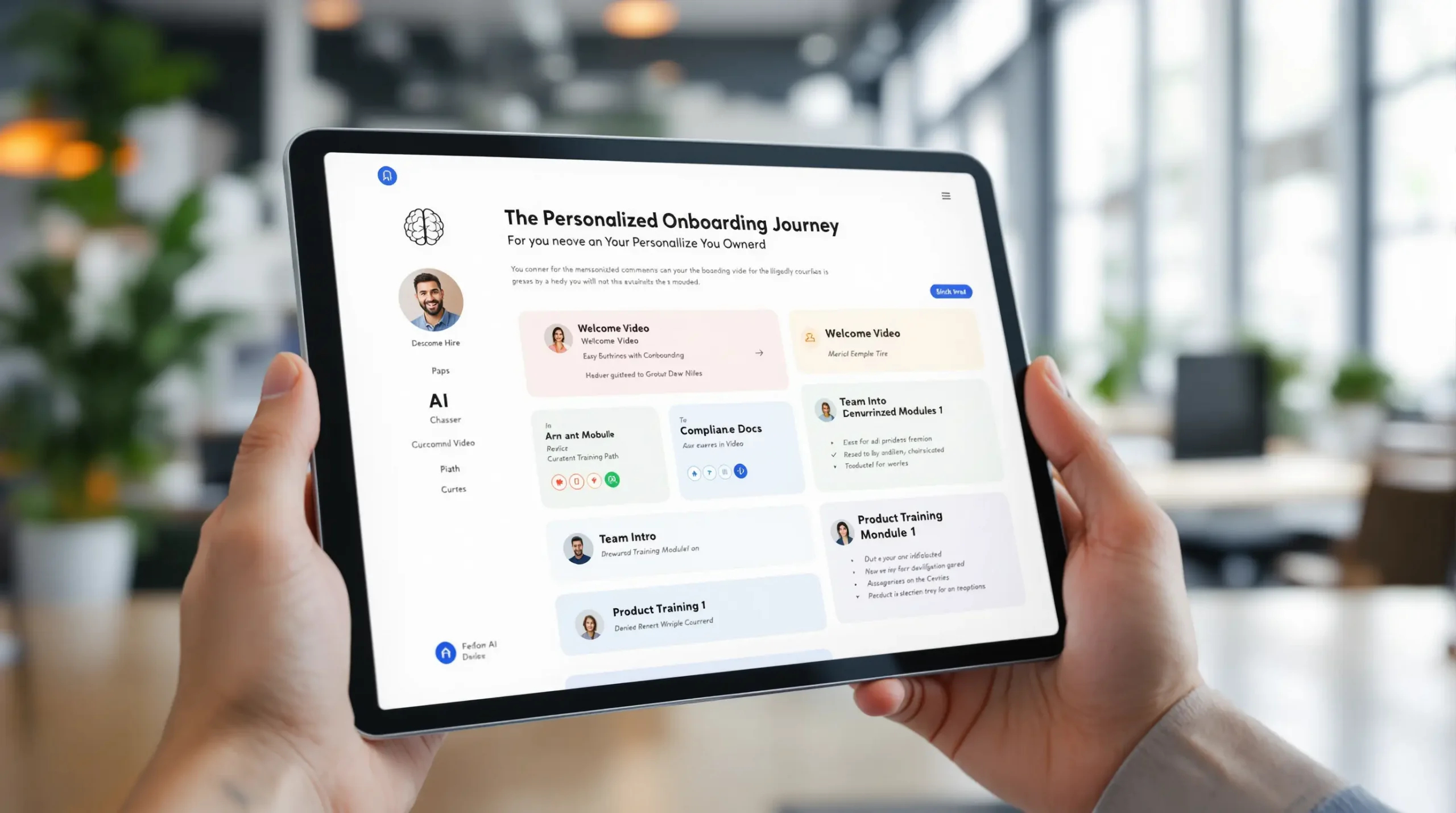
These intelligent systems analyze various data points—from assessment results to interaction patterns with training materials—to continuously refine the onboarding journey. A technical hire might receive additional resources on specific software platforms, while a customer-facing employee could see their curriculum adjusted to emphasize communication skills and product knowledge.
The impact of this personalization extends beyond efficiency. Employees who experience tailored onboarding report feeling 38% more valued by their organization and show higher engagement levels throughout their tenure.
“Our AI onboarding platform identified that I was struggling with certain technical concepts and automatically provided additional resources and simplified explanations. It felt like having a mentor who understood exactly what I needed.”
— Marcus Johnson, Software Engineer at CloudStream
The 24/7 AI Onboarding Buddy
One of the most transformative applications of AI in onboarding is the development of virtual assistants that provide continuous support to new hires. These AI “buddies” serve as always-available resources for answering questions, providing guidance, and offering encouragement throughout the onboarding journey.
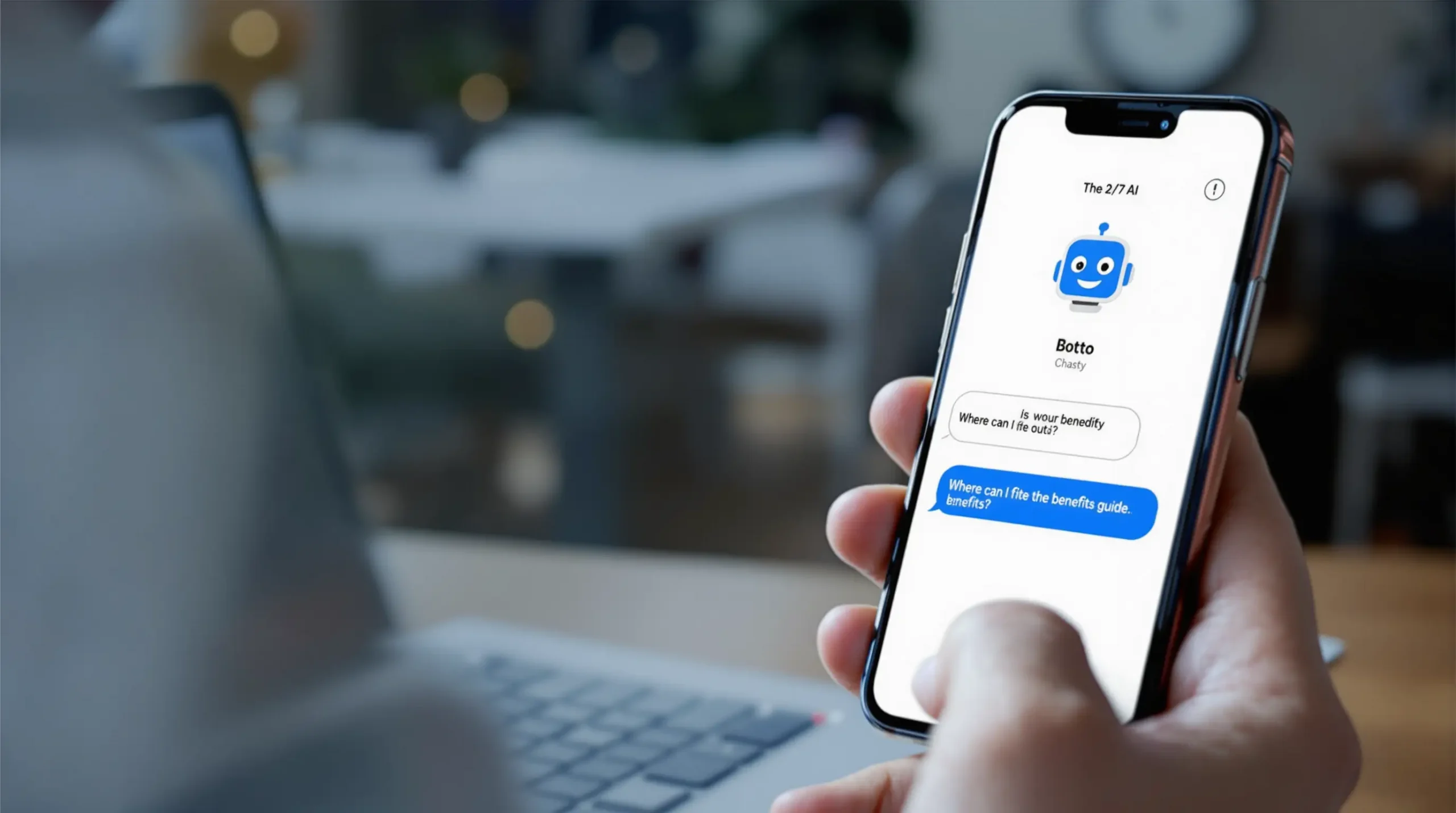
Using natural language processing and machine learning, these systems can understand and respond to a wide range of queries—from explaining company policies to providing directions around the office or helping troubleshoot common software issues. As they interact with employees, they continue to learn and improve their responses.
The psychological benefits of having on-demand support cannot be overstated. New hires often hesitate to ask what they fear might be perceived as “silly questions” of their managers or colleagues. AI assistants eliminate this barrier, providing judgment-free answers at any hour of the day.
Companies implementing AI onboarding assistants report a 40% reduction in basic support requests to HR departments and a 53% increase in new hire satisfaction with the onboarding process.
The Future of Onboarding: Predictive and Inclusive
As AI systems continue to evolve, their predictive capabilities are creating entirely new possibilities for proactive onboarding. Advanced algorithms can now identify patterns that correlate with successful employee integration or potential retention risks, allowing HR teams to intervene before problems develop.
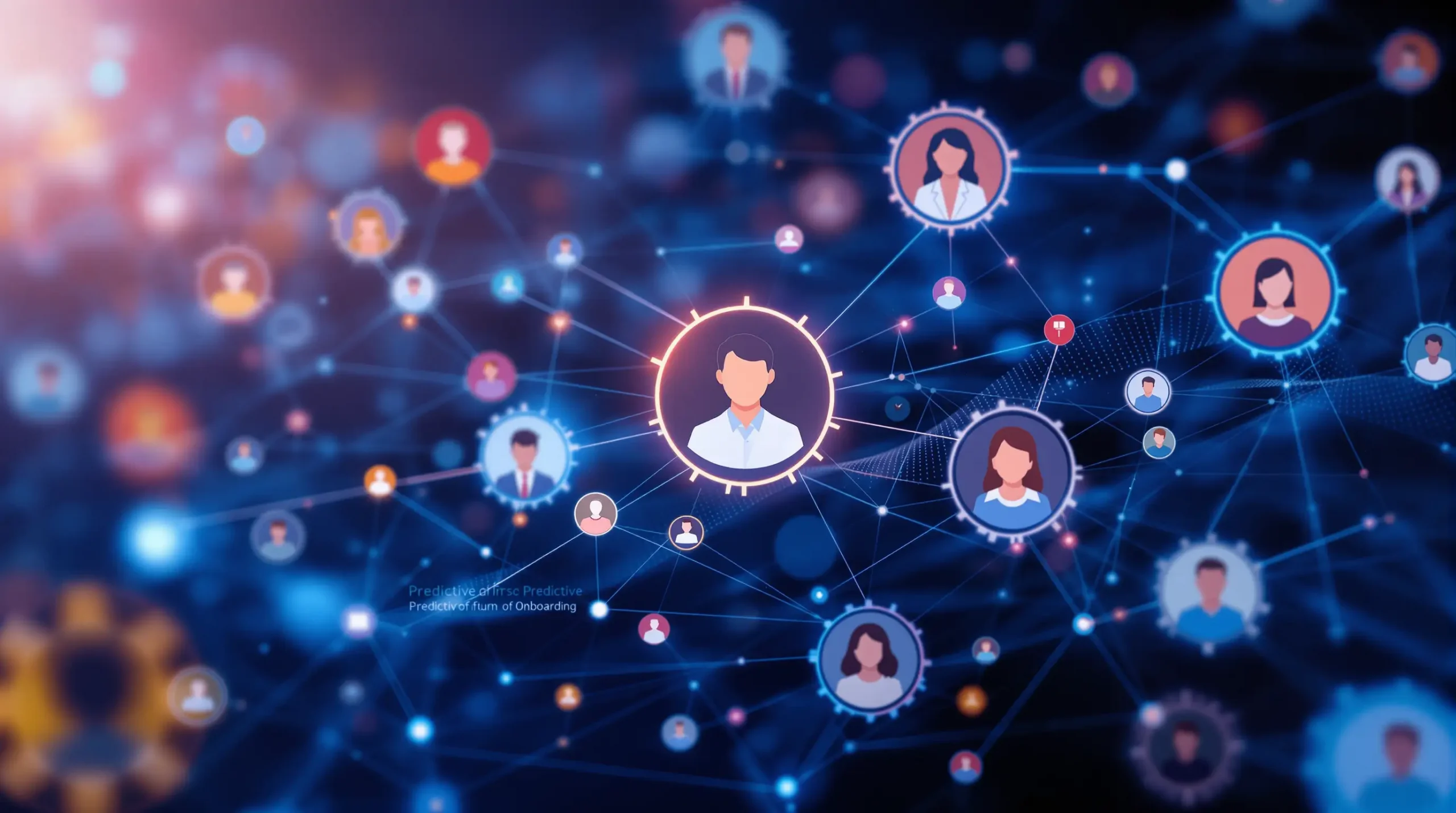
These predictive systems might flag when a new hire’s engagement with training materials suddenly drops, suggest additional check-ins for remote employees who show signs of isolation, or recommend specific team-building activities based on personality assessments.
AI is also making onboarding more inclusive. Adaptive interfaces can automatically adjust to accommodate different accessibility needs, while translation capabilities ensure that language barriers don’t impede the learning process. This inclusivity extends to learning style as well, with systems that can present the same information in different formats—visual, auditory, or text-based—depending on each employee’s preferences and strengths.
“Our predictive onboarding analytics identified a pattern of new hires struggling with our project management methodology during their third week. By proactively adjusting our training sequence and adding targeted support during this critical period, we’ve improved retention by 27%.”
— Raj Patel, Chief People Officer at InnovateNow
Implementation Strategy and Best Practices
While the benefits of AI-powered onboarding are compelling, successful implementation requires thoughtful planning and a phased approach. Organizations looking to transform their onboarding with AI should consider these best practices:
1. Start with clear objectives: Define specific goals for your AI onboarding initiative, whether that’s reducing time-to-productivity, improving retention, or enhancing the employee experience.
2. Maintain the human element: AI should augment rather than replace human connections. Design your system to facilitate meaningful interactions with managers and teammates alongside AI-driven learning.
3. Ensure data privacy and security: As AI systems collect and analyze employee data, robust privacy protections and transparent data policies are essential for building trust.
4. Gather and incorporate feedback: Continuously collect input from new hires about their AI onboarding experience and use these insights to refine the system.
5. Provide AI literacy training: Ensure that both HR teams and new employees understand how to effectively interact with and leverage AI tools as part of the onboarding process.
Measuring Success: Key Metrics and KPIs
To evaluate the effectiveness of AI-powered onboarding initiatives, organizations should track metrics across several dimensions:
Efficiency Metrics:
- Time-to-productivity (how quickly new hires reach performance benchmarks)
- Administrative hours saved by HR and management teams
- Completion rates and time for required onboarding activities
Employee Experience Metrics:
- New hire satisfaction scores
- Usage patterns of AI assistants (questions asked, resources accessed)
- Self-reported confidence levels in role-specific knowledge
Business Impact Metrics:
- First-year retention rates compared to pre-AI baseline
- Performance ratings of employees onboarded with AI versus traditional methods
- Return on investment calculations incorporating productivity gains and reduced turnover
Leading organizations are finding that the most valuable insights often come from combining these metrics with qualitative feedback to create a comprehensive view of their AI onboarding program’s impact.
Need expert help with AI customer support for your business? Contact us for tailored solutions. You can also test our AI customer robot developed for Shopify here: Test our AI Chatbot.

0 Comments